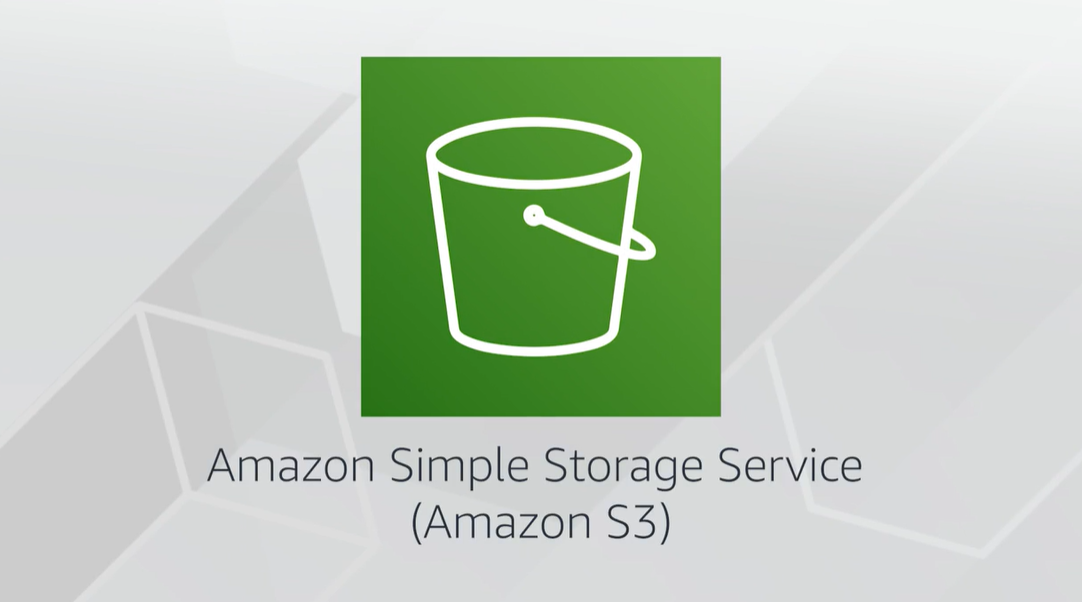
Object storage

In object storage, each object consists of data, metadata, and a key.
The data might be an image, video, text document, or any other type of file. Metadata contains information about what the data is, how it is used, the object size, and so on. An object’s key is its unique identifier.
Recall that when you modify a file in block storage, only the pieces that are changed are updated. When a file in object storage is modified, the entire object is updated.
Amazon Simple Storage Service (Amazon S3)
Amazon Simple Storage Service (Amazon S3) is a service that provides object-level storage. Amazon S3 stores data as objects in buckets.
You can upload any type of file to Amazon S3, such as images, videos, text files, and so on. For example, you might use Amazon S3 to store backup files, media files for a website, or archived documents. Amazon S3 offers unlimited storage space. The maximum filesize for an object in Amazon S3 is 5 TB.
When you upload a file to Amazon S3, you can set permissions to control visibility and access to it. You can also use the Amazon S3 versioning feature to track changes to your objects over time.
- Version Objects (Store previous version of objects)
Amazon S3 storage classes
With Amazon S3, you pay only for what you use. You can choose from a range of storage classes to select a fit for your business and cost needs. When selecting an Amazon S3 storage class, consider these two factors:
- How often you plan to retrieve your data
- How available you need your data to be
To learn more about the Amazon S3 storage classes, select the + symbol next to each category.
S3 Standard
- Designed for frequently accessed data
- Stores data in a minimum of three Availability Zones
S3 Standard provides high availability for objects. This makes it a good choice for a wide range of use cases, such as websites, content distribution, and data analytics. S3 Standard has a higher cost than other storage classes intended for infrequently accessed data and archival storage.
- Amazon S3 Static Website Hosting
S3 Standard-Infrequent Access (S3 Standard-IA)
- Ideal for infrequently accessed data
- Similar to S3 Standard but has a lower storage price and higher retrieval price
S3 Standard-IA is ideal for data infrequently accessed but requires high availability when needed. Both S3 Standard and S3 Standard-IA store data in a minimum of three Availability Zones. S3 Standard-IA provides the same level of availability as S3 Standard but with a lower storage price and a higher retrieval price. (Backups)
S3 One Zone-Infrequent Access (S3 One Zone-IA)
- Stores data in a single Availability Zone
- Has a lower storage price than S3 Standard-IA
Compared to S3 Standard and S3 Standard-IA, which store data in a minimum of three Availability Zones, S3 One Zone-IA stores data in a single Availability Zone. This makes it a good storage class to consider if the following conditions apply:
- You want to save costs on storage.
- You can easily reproduce your data in the event of an Availability Zone failure.
S3 Intelligent-Tiering
- Ideal for data with unknown or changing access patterns
- Requires a small monthly monitoring and automation fee per object
In the S3 Intelligent-Tiering storage class, Amazon S3 monitors objects’ access patterns. If you haven’t accessed an object for 30 consecutive days, Amazon S3 automatically moves it to the infrequent access tier, S3 Standard-IA. If you access an object in the infrequent access tier, Amazon S3 automatically moves it to the frequent access tier, S3 Standard.
S3 Glacier
- Low-cost storage designed for data archiving
- Able to retrieve objects within a few minutes to hours
S3 Glacier is a low-cost storage class that is ideal for data archiving. For example, you might use this storage class to store archived customer records or older photos and video files.
- Write once / read many
S3 Glacier Deep Archive
- Lowest-cost object storage class ideal for archiving
- Able to retrieve objects within 12 hours
When deciding between Amazon S3 Glacier and Amazon S3 Glacier Deep Archive, consider how quickly you need to retrieve archived objects. You can retrieve objects stored in the S3 Glacier storage class within a few minutes to a few hours. By comparison, you can retrieve objects stored in the S3 Glacier Deep Archive storage class within 12 hours.
'AWS > Storage and Databases' 카테고리의 다른 글
| [Storage and Databases] Amazon DynamoDB (0) | 2022.05.04 |
|---|---|
| [Storage and Databases] Amazon Relational Database Service (Amazon RDS) (0) | 2022.05.04 |
| [Storage and Databases] Amazon Elastic File System (Amazon EFS) (0) | 2022.05.04 |
| [Storage and Databases] Amazon EBS vs S3 (0) | 2022.05.04 |
| [Storage and Databases] Amazon EBS(Elastic Block Store) (0) | 2022.05.04 |